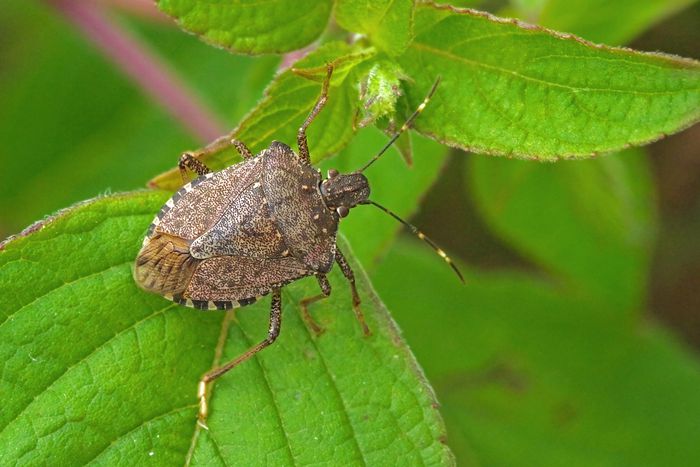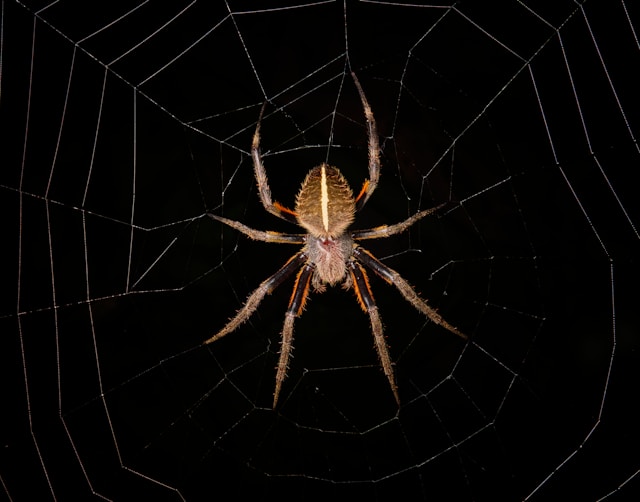Stink bug invasion hits full blast. Here’s how to get rid of the foul-smelling pests.

A new study shows that 95 percent of the stink bugs that did not find indoor shelter were killed in January's subzero temperatures.
The stink bug invasion is on. If you’ve notice more of the foul-smelling pests with the shield shape crawling around your home, it’s not your imagination.
They’re particularly bad this year and the extended stretch of summer-like weather is likely to blame, according to George Hamilton, a pest management specialist and chair of Rutgers University’s entomology department.
“The general opinion is we’re seeing higher levels of adults than we’ve seen in recent years,” Hamilton said.
Because the East Coast saw very warm and dry temperatures late into the summer, Hamilton said stink bugs may have had time to breed an extra generation before they go into hibernation.
To make matters worse, the big dip in temperatures this week could make them seek shelter in homes and businesses. And once they do, they attract other stink bugs.
“This fall, because of the dry, hot late summer weather we experienced, people can expect that the number of brown marmorated stink bug adults migrating to and entering structures to overwinter will be higher than those experienced during the last several years,” Hamilton said.
The good news is that they’re pretty harmless, though admittedly creepy and definitely stinky.
Here’s some information about stink bugs, and what you can do to get rid of them so you can get back to enjoying the start of fall.
What are stink bugs?
The brown marmorated stink bug is a hard-shelled, flying insect that normally doesn’t grow to more than .75-inches long. They’re best known for emitting a horrible smell when they feel threatened or get squished.
Some people think stink bugs smell like cilantro or skunk. Once they find a place to hibernate for the winter, stink bugs let out a different smell that tells other stink bugs to join them in their hiding spot.
When will I see stink bugs the most?
Rodents and insects seek warmth once temperatures start to drop. You’re most likely to see stink bugs inside your home or workspace in the fall as a result.
But not every fall season is the same. The number of stink bugs you see can fluctuate from year-to-year based on climate. Residents of a nearby state may see a lot more or less than you in the same year.
Stink bugs tend to gravitate toward moist, temperate climates similar to those at the Jersey shore.
Hamilton said he is seeing more adult stink bugs on N.J. farms this fall than in recent years.
Populations vary each year, but Hamilton compared this year’s number to 2010 — the last time large populations were seen on the East Coast, he said.
Are stink bugs harmful?
Stink bugs don’t bite or sting and have few natural predators. They aren’t poisonous for pets, but if yours eats one, they may vomit or drool excessively from the secretions stink bugs carry.
The insects can provide significant financial harm to farmers. Stink bugs love to feed on fruit, which then rots from the inside out.
Where did stink bugs come from?
Stink bugs didn’t show up in the U.S. until the late 1990s in Allentown, Pennsylvania. It’s believed they came over in shipping crates from China or Japan. They are most prevalent in the eastern part of America.
How do stink bugs get inside my house?
Like other small creatures, stink bugs can use openings around weatherstripping, windows, siding, utility connections, in soffits, by chimneys, or in loose mortar to crawl inside.
Homes in wooded areas may be especially susceptible to infestations, Hamilton said.
Check around the outside of your house and use caulk to seal up any cracks. Stink bugs are attracted to light, so it is recommended to keep window blinds pulled down and outdoor lights turned off in the evening.
“You’re not going to be able to get all of them, but it’ll help,” Hamilton said.
What do I do if they’re already inside?
Believe it or not, you can just vacuum over the pests and throw out the vacuum bag. Stink bugs can also be drowned in a toilet or soapy water. But if you’d prefer something more humane, use a plastic bag to return the bugs to the outdoors.
Hamilton highly cautions against using insecticides because some are toxic or violate federal law. If you choose to go that route, make sure you carefully read the label and don’t spray it everywhere, he said.
The bright side is stink bugs won’t breed inside your home. Once they are there, they enter a hibernation state and can’t reproduce again until spring.
Staff writer Allison Pries contributed to this report.
Jenna Wise may be reached at jwise@njadvancemedia.com. Follow her on Twitter @JennaRWise. Find NJ.com on Facebook. Have a tip? Tell us. nj.com/tips.
‹ Back

.png)






Comments